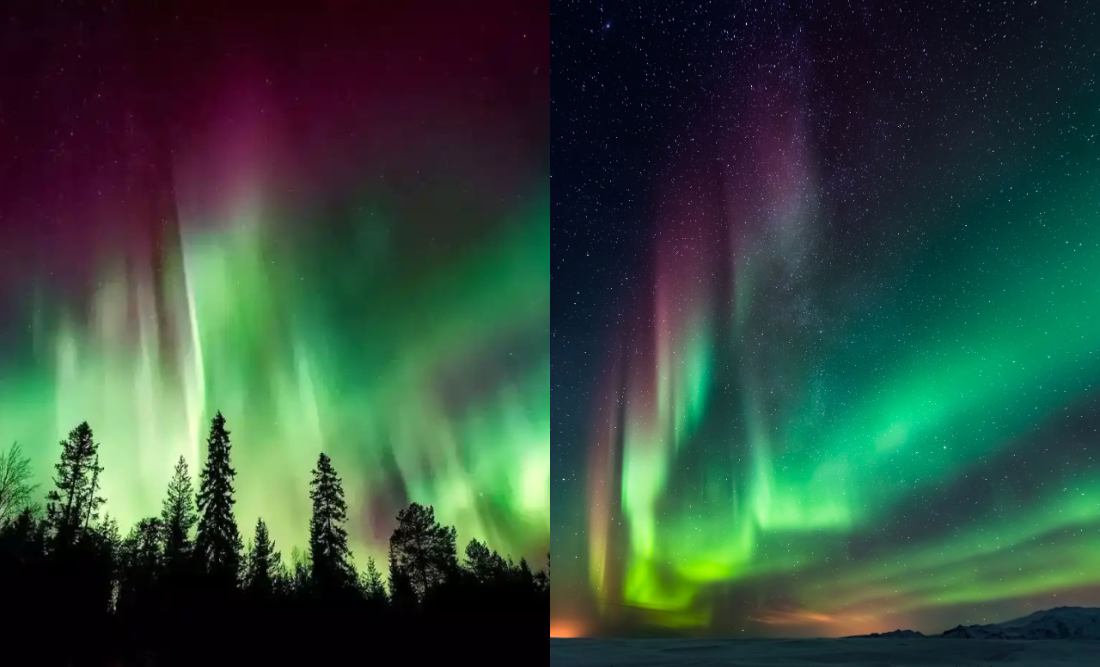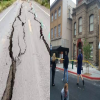Due to "powerful" solar storms, northern lights may be visible over parts of the United States.

Strong geomagnetic storm this week may make the Northern Lights visible on the U.S. mainland, according to the National Oceanic and Atmospheric Administration. Although the Atlantic tropics may be calm, there are significant storms developing on the sun, and this week, it is at least conceivable that the northern lights will be visible in some regions of the northern United States.
According to Bill Murtagh, the center's programme director, geomagnetic activity on Wednesday was "high," and a geomagnetic storm alert was issued by NOAA's Space Weather Prediction Center. The sun is predicted to continue to be disturbed for the ensuing few days. Murtagh described the atmosphere as "extremely angry," adding that there had already been over a dozen coronal mass ejections (CMEs) and that "the storm has hardly begun."
The aurora borealis, also referred to as the northern lights, usually occurs closer to the North Pole, close to Canada and Alaska. However, if the weather is right, the storm might bring the aurora farther south on Thursday and Friday, making them visible in parts of Pennsylvania, Iowa, and Oregon.
What takes place throughout a geomagnetic storm?
A coronal hole (the patches that appear black on the Sun) causes strong winds to develop during the storm, which in turn causes coronal mass ejections, or CMEs. Plasma and fragments of the magnetic field of the Sun are launched into space by a CME.
The storm began on Sunday and is anticipated to reach its peak strength on Thursday at a G3 level (the highest rating for storm intensity is G5) before ending on Friday. The majority of the CMEs that have been expelled from the Sun are "likely to have little to no influence at Earth," according to the NOAA, but at least four of them may have components that are Earth-directed.
The Sun's activity is erratic, and occasionally the disruptions are so powerful they can drag the magnetic field of the Earth away from the planet. But when released, the magnetic field snaps back like a taut rubber band, and the force of that rebound generates strong waves called Alfvén waves 80,000 miles above the surface. The magnetic pull of Earth causes those waves to move more quickly as they approach closer to it.
These incredibly fast Alfvén waves occasionally carry electrons, which can travel at speeds of up to 45 million miles per hour as they hurtle downward. The scientists predict that there will be more of similar eruptions in the upcoming months.
After a protracted pause, "sunspot" activity—which is brought on by powerful magnetic disturbances in the sun's interior—is picking up. Magnetic storm frequency is correlated with the presence of sunspots. According to Steenburgh, this suggests that Philly might someday have a chance to observe the aurora borealis. There is definitely hope, he remarked. "Longer nights, clear skies following strong cold front crossings, and the constantly rising solar cycle occur with winter"

Benjamin K
Benjamin K is a dedicated writer who loves to write on any subject. Benjamin K maintains a similar hold on politics, entertainment, health, abroad articles. Benjamin K has total experience of 3 years in web and Social. Benjamin K works as a writer in Wordict Post.
Holocaust allegation by Palestinian president rejected
Posted on 17th Aug 2022

Zelensky Demands Russian Withdrawal from Nuclear Power Plant in Zaporizhzhia
Posted on 16th Aug 2022








